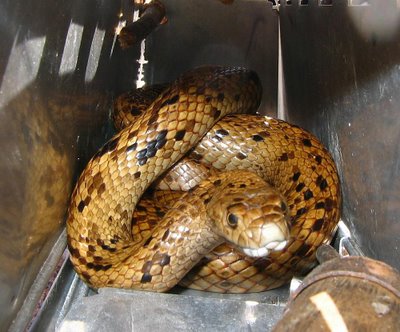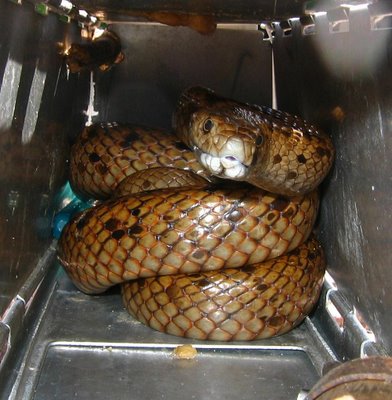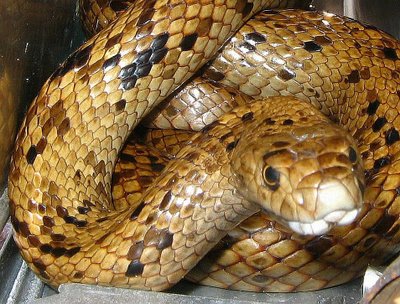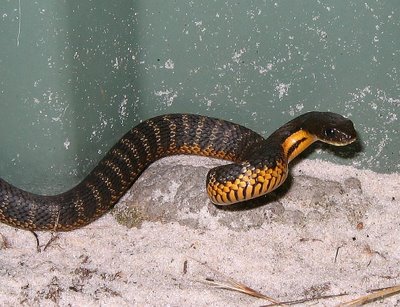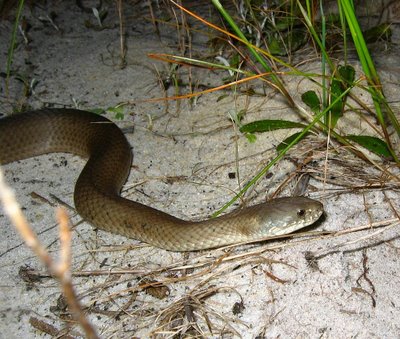The Western Crowned Snakes seldom exceed 50 cm in length, but grow larger on offshore islands. On the mainland they are usually encountered in the morning, sunbaking or crossing sandy tracks. If you see one before you get too close, it will remain still and you can slowly approach to within camera range. However, if you don't see it and walk anywhere near, it will very quickly disappear into the vegetation, where any chance of a close encounter will be lost.
A Western Crowned Snake, caught hunting frogs.


Western Crowned Snake, Elapognathus coronatus


I mentioned above that these snakes on offshore islands grow larger, which seems to conflict with the offshore island Tiger Snake, Notechis scutatus (see previous post 05), which are smaller than the mainland ones. So why is this? I suspect there is a critical mass for snakes in these island environments of around a metre. Any larger and they have difficulty finding enough food, but around this size is probably ideal to move around the environment and survive on their diet of skinks. Whilst on the mainland skinks are not so common, plus there is additional competion from larger snakes like the Tiger and Dugite (see previous post 06) who dominate the larger food items, ie larger frogs and small mammals. So the mainland Western Crowned Snake has adapted to prey upon the smaller frogs, with some skinks and possibly a few invertebrates. This niche it shares with the Bardick, Echiopsis curta (see previous post 02) and the Masters Snake, Drysdalia mastersii. The Western Crown Snake (unlike the other two) is endemic to WA and is found around the coast from the Great Australian Bight to a little north of Perth.





Hello! Hello! What's going on here then?

Animals and plants are interrelated with each other and the environment; they occupy a niche that is governed by other members who collectively make up their eco-system. If you remove a portion, like an animal or plant species, even logs or rocks, this can affect the entire eco-system and destroy the fine balance required to maintain it. So please think carefully before you cause change to natural environments.


